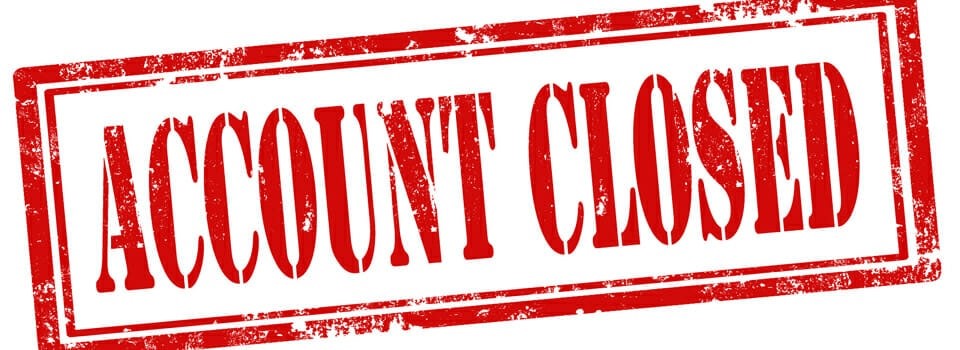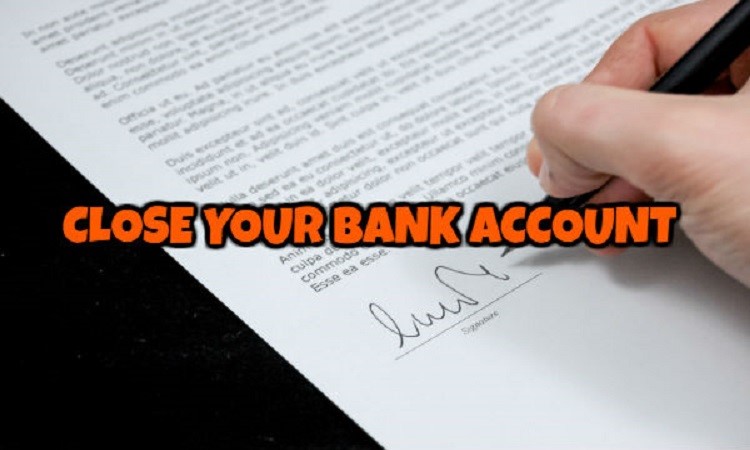How To Close A Capital One Account?
Give this article a thorough read to find out how to close a Capital One account.
Capital One account offers a fantastic selection of rewards credit cards., catering to different user preferences – be it travel, business, or secured cards. However, life changes and your credit card needs may evolve too. Suppose you find yourself in a new career involving frequent travel. In that case, your current rewards card might not be the best fit anymore, prompting you to consider switching to a travel credit card.
Closing a credit card account can be a concern due to potential credit implications, but the impact varies based on your unique credit factors and the specific account. Staying informed and understanding your options will empower you to make a well-informed decision that aligns with your financial goals.
If you want to shut down an account in Capital One, you can go to the Capital One official account to get assistance. Moreover, you can also get help closing your account via the website’s online chat feature or by phone at 1-888-464-0727. Both options are available from 8 AM EST to 11 PM EST, for 7 days a week.
If you want to know more about closing a Capital One account, you have come to the right place. We have gathered all relevant information to help you understand everything you need. So, what are you waiting for? Without much further ado, let us dive right in!
Why is your account reported as closed?
There are several reasons why your bank may decide to close your account, and it’s essential to be aware of them. Here are eight potential factors that could lead to the closure of your account.

Dormant account
An account may be considered dormant when it shows little to no activity for an extended period. If you haven’t initiated any transactions or contacted the bank within a three-to-five-year timeframe, they might close your account. It’s advisable to maintain regular activity on your account to prevent this.
Zero balance
Leaving your account with a zero balance for an extended period could prompt the bank to close it. Even if there are no minimum balance requirements, keeping your account empty for an extended tie might lead to its closure. Additionally, monthly fees could further deplete your balance.
Bounced checks or overdrafts
Frequent bounced checks or overdrafts could be a reason for account closure. Repeatedly writing checks without sufficient funds or spending more than the available balance can lead to this outcome.
Too many transfers
Exceeding the allowed number of transfers between specific accounts, such as between checking and savings accounts, may cause the banks to close one of the accounts. For instance, repeatedly surpassing the Regulation D transfer limits in a savings account might lead to its conversion into a checking account.
Suspended identity theft or illegal activity
If your bank suspects you have been a victim of identity theft or illegal activities, such as money laundering, they may close your account to prevent further fraudulent actions. Unusually large or frequent transfers or withdrawals might raise red flags.
Criminal Conviction
Not reporting a previous criminal conviction to your bank or being convicted of a crime after opening your account could result in its closure.
High-risk occupation
Engaging in a business deemed high risks, such as in sales, marijuana sales, online gambling, or escort services, might prompt the bank to close your account.
Changes at the bank
If the bank ceases operations in your state, closes branches in your areas, or exits the banking business, it may close your account.
Knowing these potential reasons can help you manage your account effectively and avoid unexpected closures.
Things to check before you close your account
Before you go ahead and close your account, take a moment to consider if it’s the right decision for you to avoid any future regrets. Closing your bank account is a significant step, so treat it seriously.
It’s a good idea to wait for all credits and deposits to clear before initiating the closure. Additionally, remember to reroute any direct deposits you receive. For example, if your paycheck goes into that bank account, chat with your employer and inform them about the change so they can redirect your deposits. This usually involves filling out a new form for the payroll department.

Don’t forget to update your bill payment information to avoid any charges being attempted on the old account. You don’t want your old bank to reject or reopen the closed account just to process the payment. That could be a real hassle!
If you have other accounts linked, such as savings, retirement, or investments, update the information by removing the old account and adding the details for your new financial institution. This is particularly important if you have automatic investments set up.
Take time with these steps and ensure everything is in order before you bid farewell to the old account.
What to do when your bank closes your account
If you find yourself in a situation where your bank has closed your account, here are seven essential steps you should take:

- Contact the bank: If you haven’t received prior notice about the closure, contact the bank immediately. Understand why the account was closed and learn how to access your remaining funds.
- Keep records: It’s crucial to maintain a paper trail. Save any written communication you receive regarding the account closure, take notes during phone calls with bank representatives, and jot down the names of the people you speak with.
- Stop direct deposits and automatic withdrawals: Avoid extra fees and ensure access to direct-deposited money by halting direct deposits and automatic withdrawals, like bill payments.
- Review outstanding checks: Check for any uncashed checks in your account. If so, contact the payees and arrange alternative payment methods to prevent bounced checks.
- Obtain your ChexSystems report: Request a copy of your ChexSystems report, which contains details about your banking activities and reasons for any account closures. This will give you insights into your banking history.
- File a complaint if necessary: If you believe your account was wrongly closed, you can submit a complaint to the Federal Office of the Comptroller’s Customer Assistance Group.
- Explore alternatives: If your bank has closed your account, consider other options. You could inquire about opening a different type of account with the same bank, like a prepaid account or a “second chance” account. Alternatively, you might explore switching to another bank, using a prepaid debit card, opting for digital payment apps like PayPal, or even considering living without a bank account.
Capital One closed my checking account
At the point when you opened your Capital One financial records, you consented to the record divulgence, maintaining our authority to close your record whenever under any circumstances. Thus, Capital One can shut your checking account anytime, including your overdraft credit extension and Debit MasterCard. You must drop any repetitive bill installments or direct stores into this record.

The assets (in addition to any premium procured) are shipped off your connected outer financial records and should appear in 2-3 business days. If you don’t have a connected record or your connected record is shut, you’ll get a check via mail within 10-12 business days at your location on the document.
How to close my Capital One account online?
You can close the record online by marking into capitalone360.com, tapping on the record you need to close, and afterward choosing “Close your account” from the “Account details” tab.
How to remove an account from the Capital One app?
The Capital One app can erase any connected account from your rundown. When you erase a record, all the exchanges and information related to the record will be eliminated and can’t be reestablished. The particular strides for erasing a record are recorded underneath. This will erase the record you complete this activity for, not different records connected under that monetary establishment.

Web Application:
- Log in to Capital One
- Recognize the record being referred to in the Account list on the left-hand side and snap the ‘Pencil symbol’ close to the record name
- Tap on the ‘Remove’ connect in the exchange box
- Affirm the ‘Remove’ activity
iOS:
- Click on the account you want to remove.
- Click on three dots towards the top right corner of the screen.
- Click on “Edit Account”
- Click on “Remove Account”
Android:
- Sign in to the app
- Press on the account you do not want any more
- Click on the trash icon
- You will be asked to affirm
- Click Remove
How to close a bank account?
Reasons for closing a bank account can vary greatly. Some might consider a joint account due to impending marriage, while others may be dissatisfied with their current bank’s fees, services, or features. Some simply seek a fresh start. Whatever the reasons, having a step-by-step guide on how to close a bank account can be incredibly helpful during the process.

Step 1: Open an account at your new bank
Before closing your current account, it’s essential to have a new account ready. This ensures a smooth transition for your finances. If you receive direct deposits, inform your employer about your new account details in advance, as it may take a few weeks for the change to take effect. Keep both accounts open during the transition to avoid any disruptions.
Step 2: Reset your automatic payments
Shifting automatic payments from one bank to another might seem daunting, but it can be managed easily. Examine your bank statements for the past 6 to 12 months to identify all automated payments, including utility bills, rent or mortgage payments, gym memberships, subscriptions, insurance premiums, and other recurring expenses. Set up automatic payments correctly with your new bank, either by authorizing the bank to pay the bills automatically or by allowing the company to withdraw funds from your account.
Step 3: Be patient
The transition process may take some time, and it’s essential to exercise patience. It could take up to a month for all transactions to successfully shift to your new account. Keep a balance in your old account until you’re confident everything functions smoothly with your new one.
Step 4: Close the old account
Once you’ve ensured all the payments and deposits are running smoothly with your new account, you can officially close your old account. Visit your branch in person, contact customer service, or use online methods to request the closure of your account. Ensure clear instructions are given to stop any statements and fees. If there is still some remaining balance in your old account, consider options like requesting a cashier’s check or transferring the funds via bank-to-bank online or through a money transfer app.
Step 5: It’s your money
Remember that it’s your right to decide where to keep your money. If you’ve chosen a new bank for better interest rates or customer service, it’s worth celebrating your decision to become a more conscious money manager. Remember that closing a checking, savings, or money market account won’t affect your credit, so feel free to explore the options whenever needed.
In the vast sea of financial institutions, you control your finances, always steering your financial ship toward what suits you best.
Tips to avoid bank account closure
You can take several proactive measures to prevent your bank from closing your account.

- Monitor your balance regularly: Always monitor your account balance before making significant payments or writing sizable checks. You can conveniently do this through online banking, mobile apps, or phone.
- Keep your account active: Avoid letting your account go dormant by using it regularly, even if it’s just for minor transactions.
- Set up alerts: Sign up for text or email alerts when your account balance falls below a certain threshold. This way, you’ll know your financial situation and can take necessary actions to avoid overdrafts or insufficient funds.
- Understand deposit holds: Be aware of how long your bank places holds on deposits, as they may not be immediately available in your account.
- Sufficient funds for payments: Ensure you have enough money to cover scheduled payments or automatic withdrawals, such as rent and utility bills.
- Opt for an account without overdrafts: Consider switching to an account type that doesn’t allow overdrafts, which can help prevent overspending and potential account closures.
- Link accounts strategically: If possible, link your accounts so that if one account’s balance drops significantly, funds can be easily transferred from another account to prevent potential overdrafts.
- Review bank statements: Regularly review your monthly bank statements to identify errors or discrepancies promptly. This can help you address issues before they escalate and cause problems with your account.
By implementing these practices, you can better manage your bank account and reduce the risk of facing unexpected account closures.
What to do if you didn’t request to close the account?
If your account shows as closed and you didn’t initiate this, your first step should be to contact your lender for clarification. This direct approach can save you the hassle of a lengthy dispute process if they confirm the closure was intentional. If you’re looking to reopen your account, simply discussing your situation with the lender might persuade them to reactivate it. Even if they refuse, you will at least confirm that the closure was not due to a mistake on your credit report.
On the other hand, if your lender confirms that your account should still be active, you will need to challenge this error. Begin by identifying the inaccuracies on your credit report, gather evidence proving your account remains open, craft a dispute letter, and send these documents to the relevant credit bureau. Although this process might seem tedious, dedicating time to correct false information could significantly enhance your credit score.
FAQs

Will closing a Capital One credit card affect your credit score?
The impact of closing a credit card account on your credit score depends on various factors. If the unused balance on the account significantly improves your credit utilization ratio, closing it might negatively affect your score. Reviewing your complete credit report thoroughly is essential to assess the potential impact.
Furthermore, even if the account closure doesn’t significantly impact your credit score, there’s no need to panic if you see a sudden decrease and aren’t expecting any changes.
Is it possible to reopen a closed Capital One credit card?
Generally, once an account is closed, it is considered a permanent action. Reopening a closed with Capital One is very rare and unlikely to happen.
What happens to the rewards earned when closing a Capital One credit card?
After closing a Capital One credit card account, it is unlikely that you can use any accumulated rewards or pos. Therefore, it is advisable to redeem any remaining rewards or points before closing the account to ensure you can benefit from them.
How do I know if my bank account is closed?
If your bank closes your account, they are required to notify you. You may also notice that you can no longer access your funds or use your debit card associated with the account. To confirm whether your account has been closed, contact the bank directly for further clarification.
What should I do if a bank like Capital One closes my account for suspicious activity?
If your bank closes your account due to suspicious activity, contact them immediately to inquire about the specific reasons behind the closure. Sometimes, the closure could result from a mistake or misunderstanding that can be resolved through communication. If necessary, you may need to file a complaint or consider finding another banking institution.
Conclusion
Now that you’ve read this article, you know how to close a Capital One account. Deciding to close an account is significant. So, before making your final decision, thoroughly research the repercussions of closing an account. Keep in mind that closed accounts can negatively impact your credit score. Just as you work hard to protect your reputation, it’s essential to ensure the information used to evaluate your creditworthiness is impeccable.
So, what are you waiting for? Conduct your research to determine what’s best for you. Once you’ve considered all your options, you’ll be ready to close your account.






